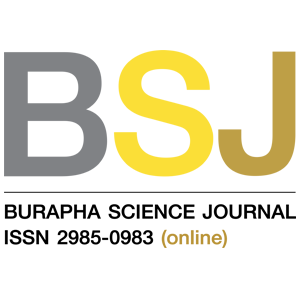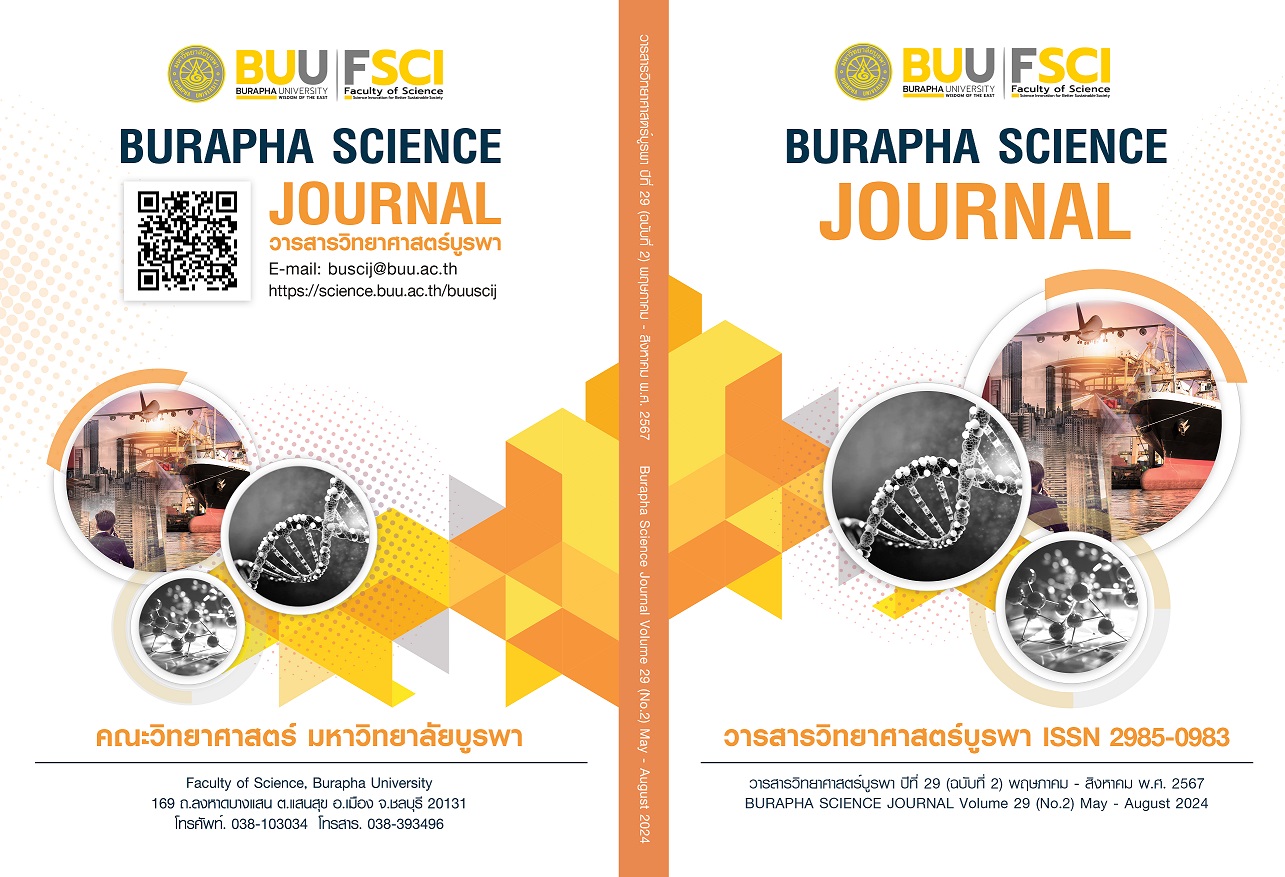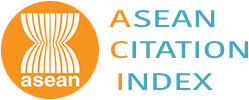การพัฒนาตำรับเซรั่มบีด : การทดสอบอิทธิพลอัตราส่วนของโซเดียมแอลจิเนต และไอออต้าคาราจีแนนที่ส่งผลต่อคุณลักษณะของเม็ดบีด
คำสำคัญ:
เซรั่ม, อิมัลชัน, สารก่อเจล , เม็ดบีด , เครื่องสำอางบทคัดย่อ
วัตถุประสงค์และที่มา : เพื่อพัฒนาผลิตภัณฑ์เครื่องสำอางโดยการใช้เทคนิคไอออนิกเจลเลชัน (ionic gelation) เป็นเทคนิคหลักในการผลิตเซรั่มบีด ในงานวิจัยนี้จึงต้องการพัฒนาตำรับเซรั่มบีดด้วยการศึกษาอัตราส่วนของสารก่อเจล ชนิดต่าง ๆ เพื่อให้ออกมาเป็นผลิตภัณฑ์เซรั่มบีดที่สมบูรณ์
วิธีดำเนินการวิจัย : ทดสอบอัตราส่วนของสารก่อเจลในเซรั่มที่นำสร้างเม็ดบีดด้วยเทคนิคไอออนิกเจลเลชัน คือโซเดียมอัลจิเนตและไอออต้าคาราจีแนนที่มีผลต่อลักษณะภายนอกและเนื้อสัมผัสของเม็ดบีดหลังขึ้นรูป และทำการเปรียบเทียบถึงความเข้มข้นของสารก่อเจลที่ใช้ในการแขวนลอยเม็ดเซรั่มบีดที่มีผลต่อความสามารถในการแขวนลอยเม็ดเซรั่มบีด โดยชนิดของสารก่อเจลที่เลือกใช้ในงานวิจัยนี้คือ Carbopol® ultrez 20
ผลการวิจัย : อัตราส่วนของโซเดียมอัลจิเนตและไอออต้าคาราจีแนนที่เหมาะสมสําหรับขึ้นรูปเซรั่มบีดที่สุดคือ 0.20:0.30 เนื่องจากลักษณะเม็ดเซรั่มบีดที่ได้เป็นทรงกลม สามารถกดแตกและเกลี่ยบนผิวง่าย-ปานกลาง ซึ่งเป็นลักษณะที่เหมาะสมที่สุดสําหรับเซรั่มบีดเมื่อเทียบกับการใช้อัตราส่วนอื่น ๆ เมื่อนำเม็ดเซรั่มบีดไปแขวนลอยอยู่ภายในเจล Carbopol® ultrez 20 ที่ความเข้มข้นต่างกันและทำการทดสอบประสาทสัมผัสพบว่า Carbopol® ultrez 20 ที่ความเข้มข้นร้อยละ 0.70 ได้รับความชื่นชอบมากที่สุด เมื่อทำการเก็บรักษาในสภาวะเร่งเพื่อทดสอบความคงตัวของผลิตภัณฑ์พบว่าทุกความเข้มข้นของสารก่อเจล Carbopol® ultrez 20 สามารถทำให้เม็ดเซรั่มบีดแขวนลอยและกระจายตัวอยู่ภายในเจลได้ แต่เจลมีความหนืดลดลงอย่างมีนัยสำคัญทางสถิติในทุกตำรับ
สรุปผลการวิจัย : อัตราส่วนของโซเดียมอัลจิเนตและไอออต้าคาราจีแนนมีผลต่อการขึ้นรูปและความแข็งของเม็ดบีด อัตราส่วนที่เหมาะสมที่สุดในงานวิจัยนี้คือ 0.20:0.30 และสารก่อเจล Carbopol® ultrez 20 ที่ความเข้มข้นร้อยละ 0.70 เป็นตัวเลือกที่เหมาะสมที่สุดในการใช้เป็นเจลแขวนลอยในตำรับเครื่องสำอางเซรั่มบีด เนื่องจากมีความคงตัวที่สุดและมีความเปลี่ยนแปลงน้อยที่สุดเมื่อเก็บรักษาในสภาวะเร่งเป็นเวลา 8 สัปดาห์
เอกสารอ้างอิง
Ahirrao, SP., Gide, PS., Shrivastav, B., & Sharma, P. (2013). Ionotropic Gelation: A promising cross-linking technique for hydrogels. Research and Reviews: Journal of Pharmaceutics and Nanotechnology, 2(1), 1-6.
Aramwit, P. (2016). 1- Introduction to biomaterials for wound healing, In Ågren, MS. (Eds), Wound Healing Biomaterials Volume 2: Functional Biomaterials. (pp.3-38). Sawston: Woodhead Publishing.
Aung, WM., Songkro, S., Songkharak, S., Kaewnopparat, N, & Wungsintaweekul, J. (2022). Preparation, characterization, and antibacterial activity of plaunotol and plaunoi extracts complexed eith hydroxypropyl--cyclodextrin. Saudi Pharmaceutical Journal, 30, 679-692.
Benderly, D.,& Zolotarsky, Y. (2013). Beyond thickening – Use of Alkyl Acrylate Crosspolymer in personal care formulations. In. Patil, A. & Ferritto, MS. (Eds),Polymers for personal care and cosmetics. (pp.205-218). Washington, DC: American Chemical Society.
Calvo, P., Remuñan-Lópes, C., Vila-Jato, L.,& Alonso, MJ. (1998). Novel hydrophilic chitosan-polyethylene oxide nanoparticles as protein carriers. Journal of Applied Polymer Science, 63(1), 125-132.
Deuschle, VCKN., Brusco, I., Piana, M. Faccin, H., Carvalho, LM., Oliveira, SM., & Viana, C. (2019). Persea americana Mill. crude extract exhibits antinococeptive eddect on UVB radiation-induced skin injury in mice. Inflammopharmacology, 27, 323-338.
Hurler, J., Engesland, A., Kermanu, BP., & Škalko-Basnet, N. (2011). Improved texture analysis for hydrogel characterization: Gel cohesiveness, adhesiveness, and hardness. Journal of Applied Polymer Science, 125(1), 180-188.
Klieokanokphan, W. & Supree, K. (2010). Development of cosmetic beads loaded with vitamin E [Unpublishes Individual study]. Mahidol University. (in Thai)
Kongsook, S., Nasaree, T., Khotsa, S., Rungrot, N., Phonchaiya, S., & Wuttisela, K. (2020). Synthesis and characterization of coloured calcium alginate noodles. Journal of Science and Science Education, 3(1), 1-7. (in Thai)
Mathiowitz, E. (1999). Microencapsulation. In Mathiowitz E. (Eds.), Encyclopedia of Controlled Drug Delivery. Vol.2. (pp. 493-523). New York: John Wiley & Sons.
Opanasopit, P. (2016). Overview of drug delivery systems. In A network for exchanging knowledge and experiences of personnel in the Thai vaccine delivery system. (pp. 1-25). Bangkok: Chulalongkorn university. (in Thai)
Pongjanyakul, T. (2012). Alginate: Natural Polymer to Drug Delivery System. Khon Kaen: Faculty of Pharmacy, Khon Kaen University.
Preprame, S. (2002). Carrageenan and konnyaku. Journal of Academic Service Centre, 10(2), 21-23. (in Thai)
Skjåk-Bræk, G. & Draget, K.I. (2012). Alginate: Properties and Applications. In Matyjaszewski, K. & Möller, M. (Eds.), Polymer Science: A Comprehensive Reference. (pp. 213-220). Amsterdam: Elsevier Science.
Stanley, N. (1987). Production, properties and uses of carrageenan. In McHugh, D.J. (Eds.), Production and Utilization of Products from Commercial Seaweeds. Rome: Food and Agriculture Organization of the United Nations.
Tamnak, S., Mirhosseini, H., Tan, C.P., Amid, B.T., Kazemi, M., & Hedayatnia, S. 2016. Encapsulation properties, release behavior and physicochemical characteristics of water-in-oil-in-water (W/O/W) emulsion stabilized with pectinepea protein isolate conjugate and Tween 80. Food Hydrocolloids, 61, 599-608.
ดาวน์โหลด
เผยแพร่แล้ว
รูปแบบการอ้างอิง
ฉบับ
ประเภทบทความ
สัญญาอนุญาต
ลิขสิทธิ์ (c) 2024 คณะวิทยาศาสตร์ มหาวิทยาลัยบูรพา

อนุญาตภายใต้เงื่อนไข Creative Commons Attribution-NonCommercial-NoDerivatives 4.0 International License.
Burapha Science Journal is licensed under a Creative Commons Attribution-NonCommercial-NoDerivatives 4.0 International (CC BY-NC-ND 4.0) licence, unless otherwise stated. Please read our Policies page for more information



